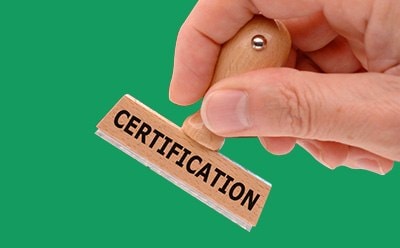Pharmacopeia & Metrological Institute Standards

We distribute Chemical Reference Substances and Reference Standards from the world’s three leading pharmacopoeias: the United States Pharmacopeia (USP), the European Pharmacopoeia (EP), and the British Pharmacopoeia (BP). Also available are the internationally recognized National Metrology Institute standards including BAM, NIST, NMI Australia and IRMM/BCR. These analytical standards can be used for a variety of method verification practices including instrument qualification and calibration, analytical method validation, system suitability testing, assays and quality control checks.
View featured products:
Products
Related Product Resources
- Brochure: Make Quality Your Upmost Priority
Whether you’re calibrating your measurement system or validating a method, bolster confidence in your analytical results with the use of primary reference standards from pharmacopeias and National Metrology Institutes (NMIs).
- NIST Standard Reference Materials Catalog
Today, NIST measurements support the smallest of technologies– nanoscale devices so tiny that tens of thousands can fit on the end of a single human hair–to the largest and most complex of humanmade creations, from earthquake–resistant skyscrapers to wide-body jetliners to global communication networks.
USP Standards
The United States Pharmacopeia is an independent, not-for-profit, nongovernmental pharmacopeia. Through their published monographs, the USP sets internationally recognized quality standards in the USP-NF reference text. To support testing according to the monographs, USP maintains an ever-growing catalog of highly characterized Reference Standards for thousands of APIs and Related Compounds.
Ph. Eur (EP) Standards
The European Directorate for the Quality of Medicines & HealthCare (EDQM) publishes drug safety/purity standards in the European Pharmacopoeia (Ph. Eur.). EDQM offers a growing portfolio of over 3,000 Chemical Reference Standards (CRS) including many esoteric impurities not available through any other source.
BP Standards
The British Pharmacopoeia (BP) sets quality standards for UK pharmaceutical substances and medicinal products. Used in over 100 countries, the BP has a wide reach and collaborates with other leading pharmacopoeias as well as the World Health Organization (WHO). British Pharmacopoeia Chemical Reference Substances (BPCRS) primary standards are available for a broad range of compendial applications and can be conveniently ordered in one place together with the rest of your analytical workflow.
NIST Standards
Founded on March 3, 1901, the National Institute of Standards and Technology (NIST) in the United States is one of the oldest physical science laboratories globally. Its measurements support the smallest of technologies to the largest and most complex of human-made creations. NIST standards, also called standard reference materials (SRMs), are available for use in various areas such as industrial raw materials, clinical chemistry, environmental analysis, and food and agriculture.
JRC
Joint Research Centre (JRC), before known as Institute for Reference Materials and Measurements (IRMM), supports the European Union (EU) policies with scientific advice on measurements and standards by the development of reference methods or certified reference materials. The reference materials of the European Commission’s Joint Research Centre cover several areas such as clinical chemistry, the environment, genetically modified organisms (GMOs), industrial raw materials, occupational hygiene, physical properties as well as food and agriculture.
NRC Canada
The standards prepared by the National Research Council (NRC) of Canada include high-quality and reliable certified reference materials (CRMs) for industrial and academic research. The CRMs are produced in an ISO/IEC 17025 and ISO 17034 compliant laboratory, with approval through the Inter-American Metrology System. These standards have applications in areas such as clinical, environment, food safety, nanomaterials, high-purity materials, and nutrition.
NMI Australia
The National Measurement Institute, Australia (NMIA) is Australia's peak measurement body for biological, chemical, legal, physical, and trade measurements. It offers a broad range of CRMs and high-quality reference materials for use in multiple industries including forensics, agriculture and environmental testing. In addition, NMI Australia offers one of the world’s most comprehensive portfolios of CRMs supporting sports testing – including drugs, metabolites and a wide assortment of hormones. NMI Australia’s CRMs are manufactured under the scope of ISO 17034 and are certified in an ISO/IEC 17025 accredited testing laboratory.
BAM
Our selection of Federal Institute for Materials Research and Testing (BAM) standards includes reference materials certified under the principles and requirements of ISO 17034 and ISO Guide 35.
Secondary Pharmaceutical Standards
Our selection of secondary pharmaceutical standards includes CRMs certified under ISO/IEC 17025 and ISO 17034, offering multi-traceably to primary standards from pharmacopeias such as USP, Ph. Eur, and BP. Paired with compendial (primary) standards, secondary standards serve as a convenient and cost-effective alternative to the preparation and qualification of in-house working standards and can help greatly streamline your analytical workflow. These pharmaceutical secondary standards have applications in raw material QC, in-process testing and finished good release. The accompanying certificate of analysis is ISO Guide 31 compliant, including certification details and certified purity values, allowing the use of the standard by ISO/IEC 17025 accredited laboratories for applications outside of compendial monographs.
To continue reading please sign in or create an account.
Don't Have An Account?